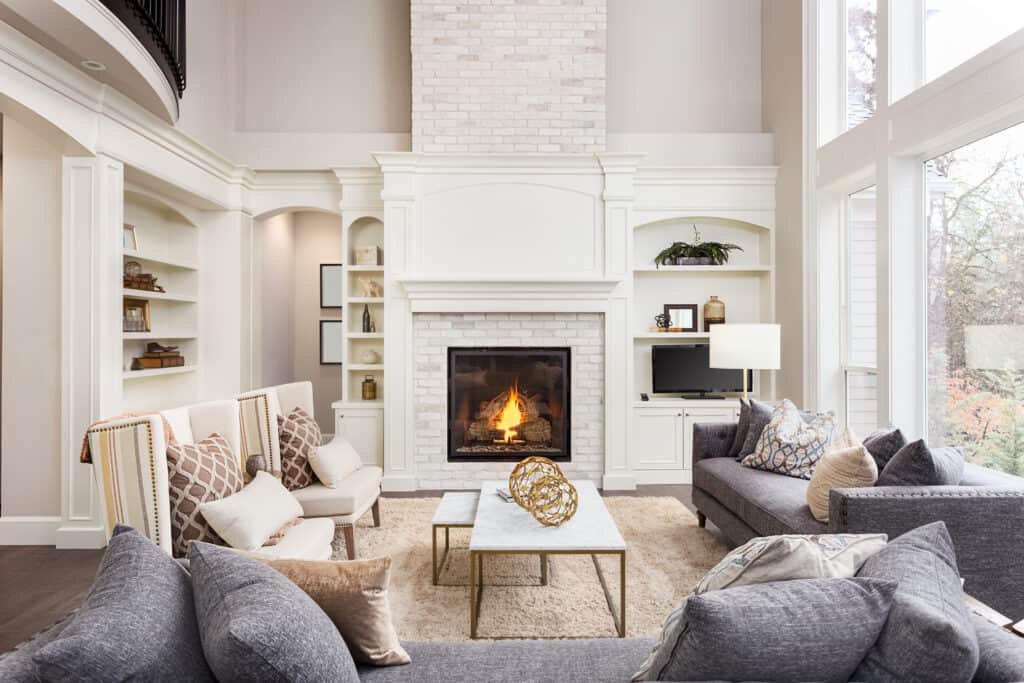4 Ways to Save When Selling Your Home

Selling your home can be a thrilling and very lucrative experience. But for the first-time home seller, it can also be nerve-wracking and deflating.
That’s because selling the largest investment of your life can be counterintuitively expensive. Getting your home ready to be scrutinized by strangers takes a lot of cash and elbow grease. As the saying goes, it takes money to make money.
However, there are some easy ways to cut down on your front-end expenses to make your home sale more profitable. Let’s look at five of the best.
Stage Your House Yourself
Professional home staging is expensive. The average cost of staging a home is just over $1,000, and renting furniture can add more. That’s the bad news. The good news is, you can do a lot of home staging yourself.
At base, the art of home staging is simply making a home as appealing as possible to prospective buyers; there’s a reason that real estate agents say that people “buy with their eyes.” You want to show your home in the best possible light, and help buyers envision the potential of your living space. That’s easier for a trained, objective expert to do, but you can get a great result if you follow a few general rules.
If you hired a professional stager, they’d likely deep clean your home before they staged it, so start with that. Clean the floors, walls, windows, appliances and trim; if your home needs a lot of work, hiring a professional cleaning crew might be a good investment.
 Next, consider that the key to a beautiful photo or film is the lighting. Remove all window coverings, like blinds or drapes, to admit natural light.
Next, consider that the key to a beautiful photo or film is the lighting. Remove all window coverings, like blinds or drapes, to admit natural light.
Now consider your furniture. If it’s out-of-date or in poor condition, put it in storage or throw it out. Even if your furniture is up-to-date and in great condition, keep in mind that having too much furniture crammed into a space is just as bad as not having any at all. You want to have enough furniture in your home to make it warm and inviting, but keep enough open space so that prospective buyers can project their own tastes onto the home.
The “less is more” rule definitely applies here; above all, make sure your home doesn’t look cluttered.
Pre-Sale Inspection
A pre-sale inspection can save you money and a lot of potential stress. If you wait until the buyer’s inspection to discover problems with the house, that could mean choosing between a price reduction, or paying for a list of repairs on the buyer’s timeline.
 The average cost of a pre-sale inspection is just over $300, and covers everything from the roof, foundation, plumbing, HVAC systems, the chimney and fireplace, and exterior features of the home like sidewalks.
The average cost of a pre-sale inspection is just over $300, and covers everything from the roof, foundation, plumbing, HVAC systems, the chimney and fireplace, and exterior features of the home like sidewalks.
Discovering problems with your home ahead of time allows you to perform repairs at your own pace, shopping around for the best contractor rates, instead of having them done in a panic.
It’s also a great marketing advantage. Telling prospective buyers that your home has undergone a pre-sale inspection, followed by repairs and remediation, encourages them to bid with confidence.
Low Cost Repairs
Even if your home doesn’t require any major repairs, freshening it up a little can pay huge benefits when it hits the market. And we’re not talking about a new roof or an in-ground pool; some of the most effective repairs are also some of the cheapest.
A Fresh Coat of Paint
A new paint job can make a home look warmer, cleaner, and brighter; it’s also a job that can be done in a weekend, for the cost of paint, some drop cloths, and a few rollers.
If you decide to paint the interior of your home before you put it on the market, choose your colors carefully. Though white may seem like the obvious choice, it can seem harsh and institutional, and shows dirt easily. Opt for a softer, off-white tone for more aesthetically pleasing walls.
White does work for ceilings, though. Painting the ceiling a lighter color than the walls makes the ceilings seem higher, which makes the entire room seem larger. Just remember to invest in high-quality paint; the smoother, more uniform texture makes a big difference.
Clean Carpets
Carpets can take a beating in a busy, family home, and worn or stained carpets can make a hugely negative impression on prospective buyers. But a lot of staining, matting, and apparent wear can be cured by a thorough cleaning.
Even if your carpet still looks good, it might have a faint odor that you’ve become nose-blind to, so a deep cleaning is always a good idea.
The easiest way to thoroughly clean your carpets is to rent a steam cleaner. Make sure you follow the directions, and don’t use too much cleaning solution, which can leave unsightly residue. Afterwards, opening windows and using fans can speed up the drying process.
Fixing the Roof
A new roof isn’t exactly “low cost,” considering it can be the single most expensive home repair of all, but if you do have roof problems, it’s better to deal with it before you put your home on the market, rather than let it become an issue down the road.
In 2017, the U.S. Census found that Americans spent an average of $6,800 to replace their roofs. Considering that 50% of that cost is labor, you could assume that the materials for replacing your roof cost about $3,400.
If it’s a relatively simple matter of replacing shingles, you can cobble together the expertise from YouTube and some DIY books, you could probably repair your roof yourself. You could do the first part of the work and remove the old shingles yourself, before having pros install the new ones. Either way, you could get yourself a shiny new roof far below the average sticker price of $20,000.
